7. Import/Deploy: What's New
(Home) Previous
Next
1. Import Context Menus
The Import context menu options (for example, Import Channel
and Import Policy for a Driver object) in the Outline view and the Modeler have
been combined into a single Import option.
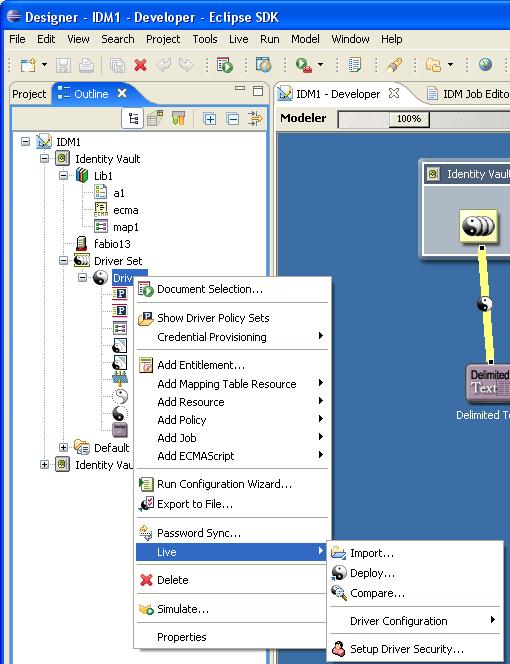
The dialog box that launches when you select Import allows you to select all
object types that can be imported into the Container object. For example, Policies,
Jobs, ECMAScript, Mapping Tables and Resource objects can be imported into a
driver. Driver, Library and Job objects can be imported into a driver set.
The following figure illustrates a Publisher channel, Job, DirXML Script, and
ECMAScript Resource object being imported to a driver.
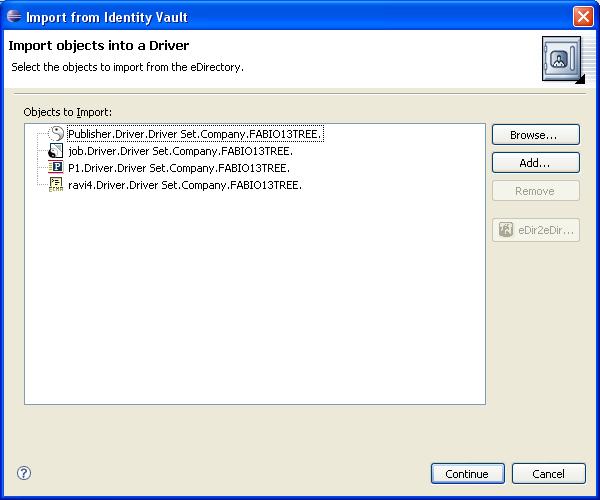
2. Import an eDirectory String Version
During an import, Designer reads the version of the eDirectory
server that you are importing from and stores the version on the associated
Server object. This value is displayed in the server’s properties page
and is included when you generate documentation..
3. Prompt When You Restart a Driver
Designer prompts you to restart a driver when you are deploying a driver that
is running on eDirectory. An option to remember the selection and not prompt
you again was added to the Restart Driver dialog box.

4. Policy Linkage Support
Designer 2.0 M5 has been updated to support Version 3.5 of
the Identity Manager engine. This engine version changed the manner in which
policies are linked in the policy set of a driver or channel. In earlier releases,
if a policy P1 was included in the Input Policy Set of a driver and was followed
by policy P2, P1 needed to be followed by P2 in every other policy set it was
contained in.
The following image illustrates P1 being included in both
the Input and Output Transformation policy sets. In both policy sets, the policy
P1 is followed by P2.
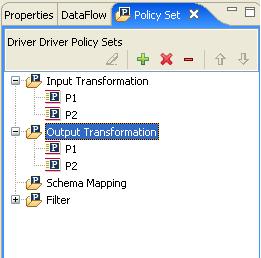
The new policy linkage removes this restriction by allowing policies to be included
in any order within any policy set. For example, the Input policy set of a driver
can contain policy P1, followed by P2, while the Output Transformation policy
set can contain policy P1 followed by P3.
The following figure illustrates the new policy linkage. Policy
P1 is being included in both the Input and Output Transformation policy set,
but is followed by P2 in the Input policy set and by P3 in the Output policy
set.
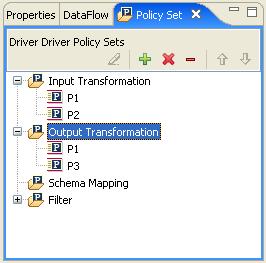
Designer 2.0 M5 continues to support importing from and deploying to Identity
Manager versions earlier than 3.5. When the server associated with a driver
set is set to a pre-3.5 version, the Policy Manager view prevents creating an
invalid policy linkage. The following dialog box is displayed when an invalid
policy linkage is encountered.
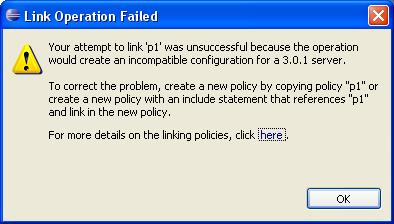
It is possible for you to set up an Identity Manager 3.5 system and create policy
links that are incompatible with a pre-3.5 environment. If you downgrade a server
to a pre-3.5 version, project checks notify you that the policy linkage cannot
be deployed..
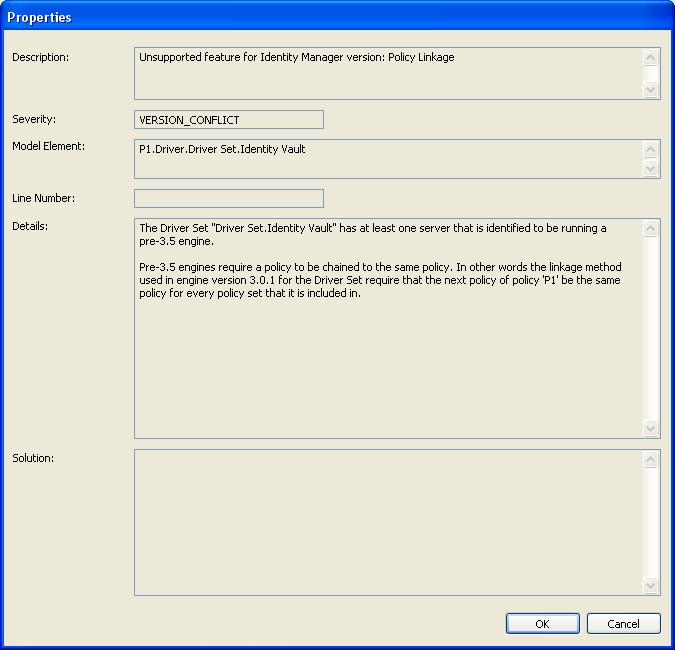
Designer also notifies you in the deployment summary screen of an invalid configuration.
The following figure illustrates an error that was generated when Designer tried
to deploy policy P1 to a pre-3.5 server, where the server pointed to two different
policies:
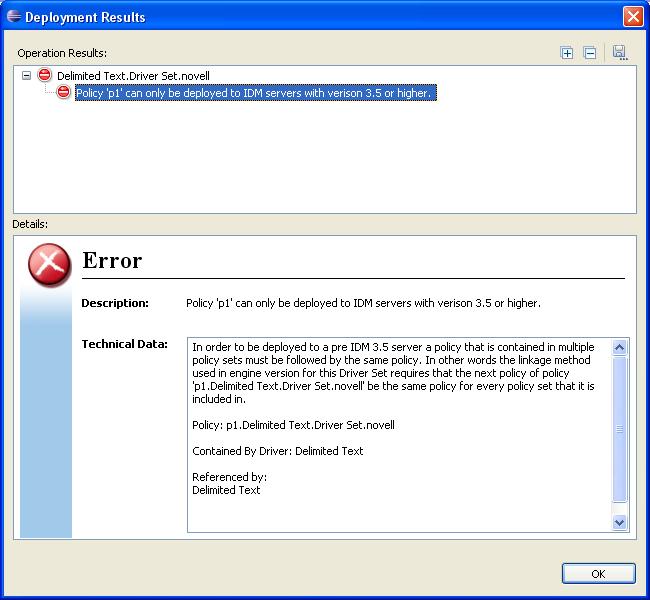
5. Job Scheduler Support (Identity Manager 3.5 Only)
Designer 2.0 M5 supports the new Job Scheduler objects in
Identity Manager 3.5. Job objects can be imported, deployed, compared and reconciled.
If you create a Job object in an Identity Manager 3.5 system and then downgrade
your server to a pre-3.5 version, project and deployment checks notify you that
the Job cannot be deployed.
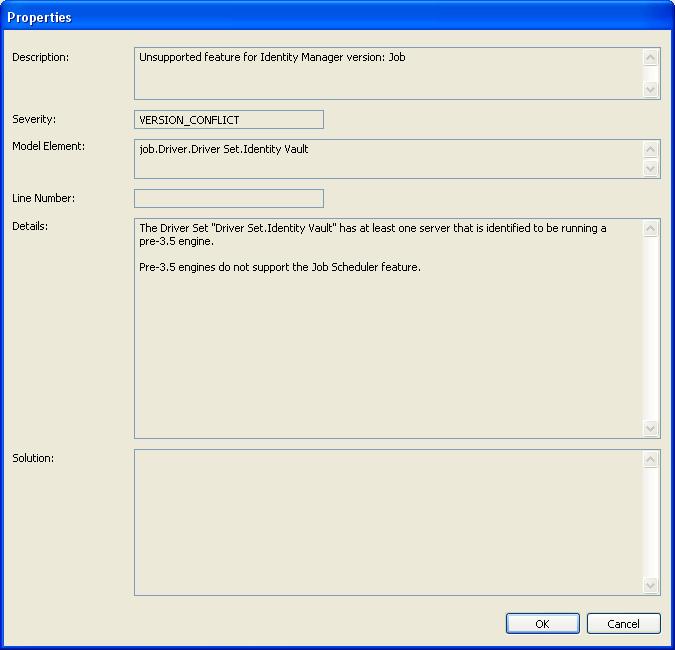
For more information on how Job objects function and how to use them, see the
Identity Manager 3.5 documentation.
6. Library Support (Identity Manager 3.5 Only)
Library objects introduced in Identity Manager 3.5 enable
you to organize you shared Policy and Resource objects. Library objects can
be imported, compared, reconciled, and deployed similar to other Identity Manager
objects. Library objects can be contained by an Identity Vault or driver set
and are deployed when the parent object is deployed.
If an Identity Vault contains a library, the deployment context specified in
the library or the context inherited from the Identity Vault must exist in eDirectory
when the library is deployed. Otherwise, an error is reported.
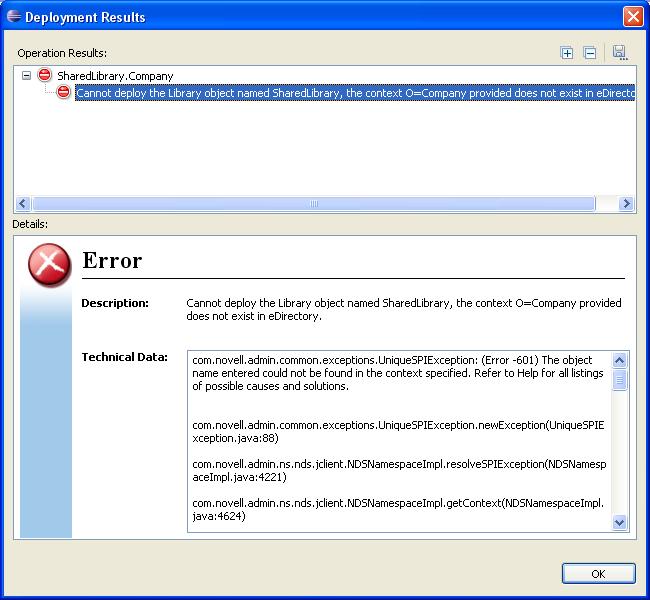
If you create a Library object in an Identity Manager 3.5 system and then downgrade
your server to a pre-3.5 version, project checks notify you that the library
cannot be deployed.
The deployment summary also includes any errors that prevented the library from
being deployed. The following figure illustrates that the eDirectory tree where
the library was being deployed did not contain the necessary eDirectory schema
class for the library.

7. Resource Support (Identity Manager 3.5 Only)
Designer 2.0 M5 supports the new Resource objects in Identity
Manager 3.5. Resource objects can be imported, deployed, compared and reconciled
similar to other Identity Manager objects. They can be contained by a library,
driver, or channel and are deployed when the parent object is deployed.
Designer currently supports ECMAScript, Mapping Table, Credential Provisioning,
and generic Resource objects. If you create a Resource object in an Identity
Manager 3.5 system and then downgrade your server to a pre-3.5 version, project
and deployment checks notify you that the Resource object cannot be deployed..
(Home) Previous
Next